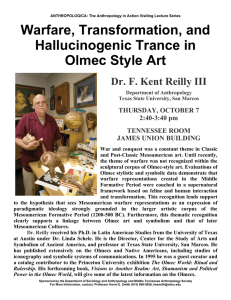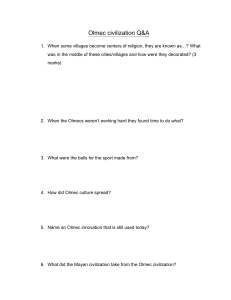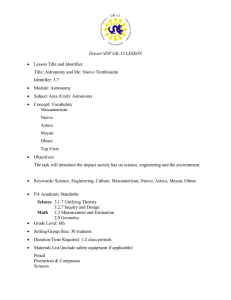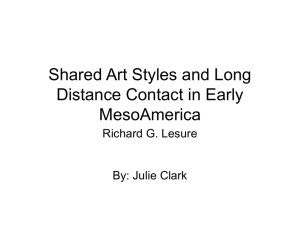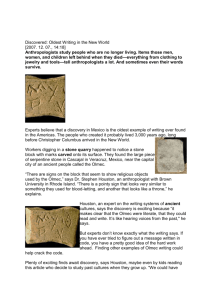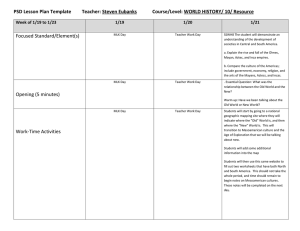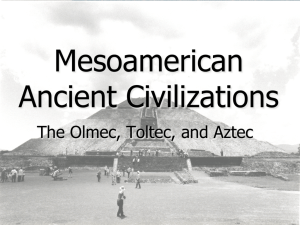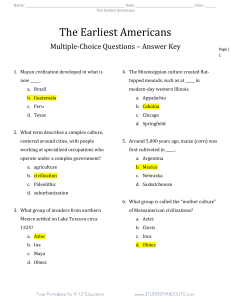3.986 - Introduction to Archaeology Fall 2006
advertisement
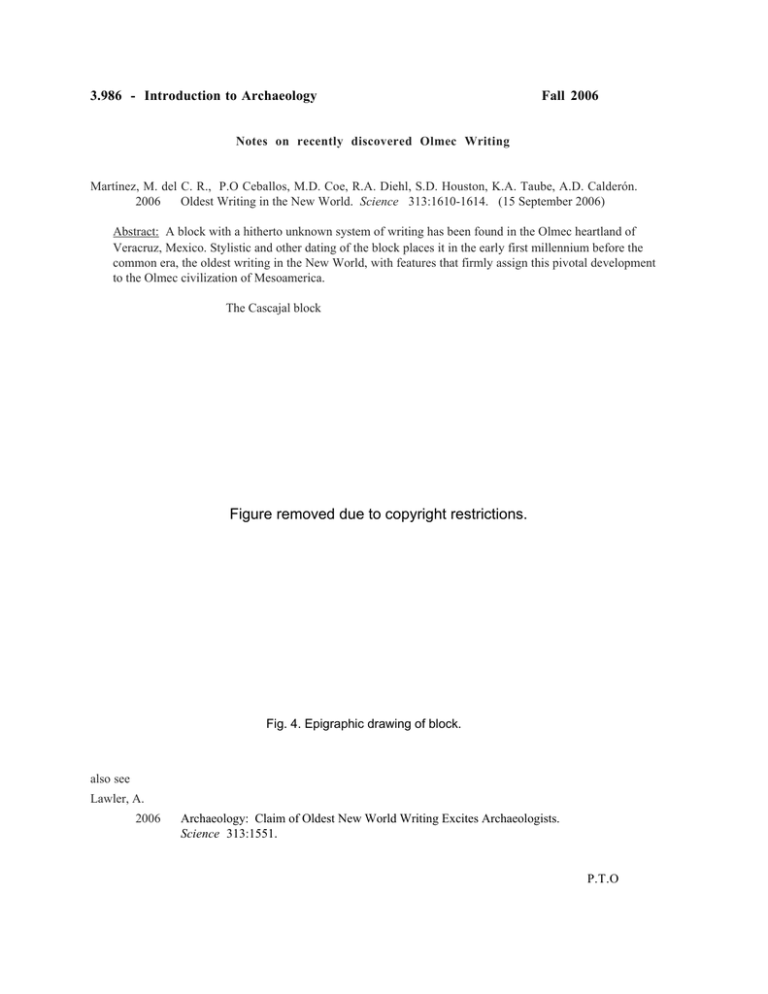
3.986 - Introduction to Archaeology Fall 2006 Notes on recently discovered Olmec Writing Martínez, M. del C. R., P.O Ceballos, M.D. Coe, R.A. Diehl, S.D. Houston, K.A. Taube, A.D. Calderón. 2006 Oldest Writing in the New World. Science 313:1610-1614. (15 September 2006) Abstract: A block with a hitherto unknown system of writing has been found in the Olmec heartland of Veracruz, Mexico. Stylistic and other dating of the block places it in the early first millennium before the common era, the oldest writing in the New World, with features that firmly assign this pivotal development to the Olmec civilization of Mesoamerica. The Cascajal block Figure removed due to copyright restrictions. Fig. 4. Epigraphic drawing of block. also see Lawler, A. 2006 Archaeology: Claim of Oldest New World Writing Excites Archaeologists. Science 313:1551. P.T.O Pohl, M.E.D., K.O. Pope, C. von Nagy 2002 Olmec Origins of Mesoamerican Writing. Science 298:1984-87. Abstract: A cylinder seal and carved greenstone plaque bearing glyphs dating to 650 B.C. have been uncovered near the Olmec center of La Venta in Tabasco, Mexico. These artifacts, which predate others containing writing, reveal that the key aspects of the Mesoamerican scripts were present in Olmec writing: the combination of pictographic and glyphic elements to represent speech; the use of the sacred 260-day calendar; and the connection between writing, the calendar, and kingship. They imply that Mesoamerican writing originated in the La Venta polity. Figure removed due to copyright restrictions. Fig. I. Map showing Mesoamerican archaeologicaL sites; early monuments with glyphs; and the geographic distribution of the Isthmian, Mayan, and Oaxacan scripts.�� Figure removed due to copyright restrictions. Fig. 2. Photograph (left) and rollout drawing (right) of the cylinder seal from San Andres, La Venta, Tobasco, mexico. Scale bar in cm.
